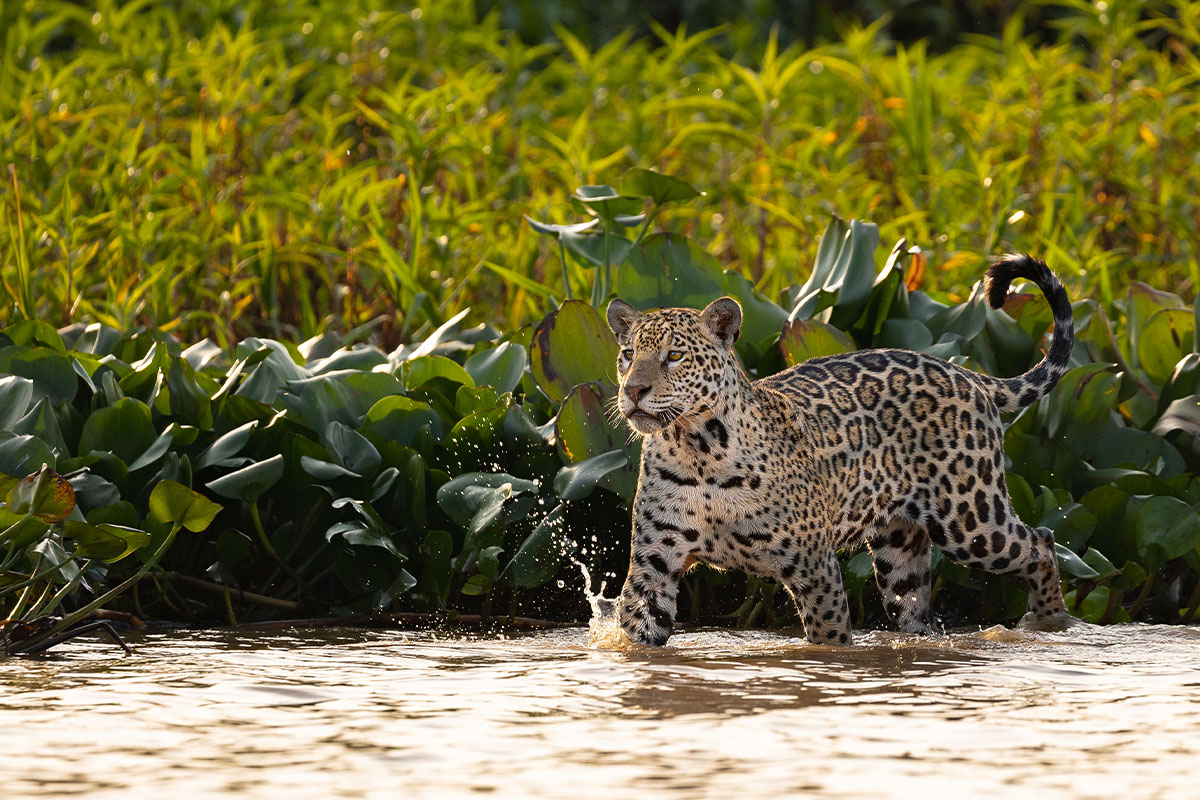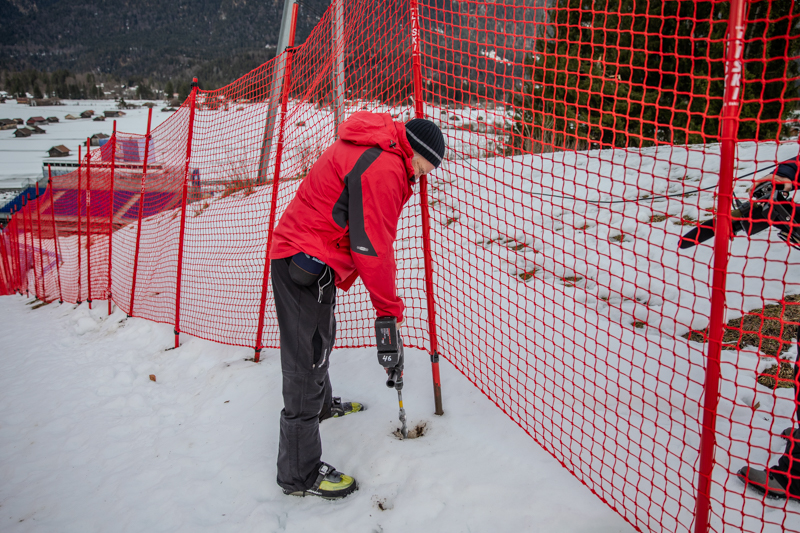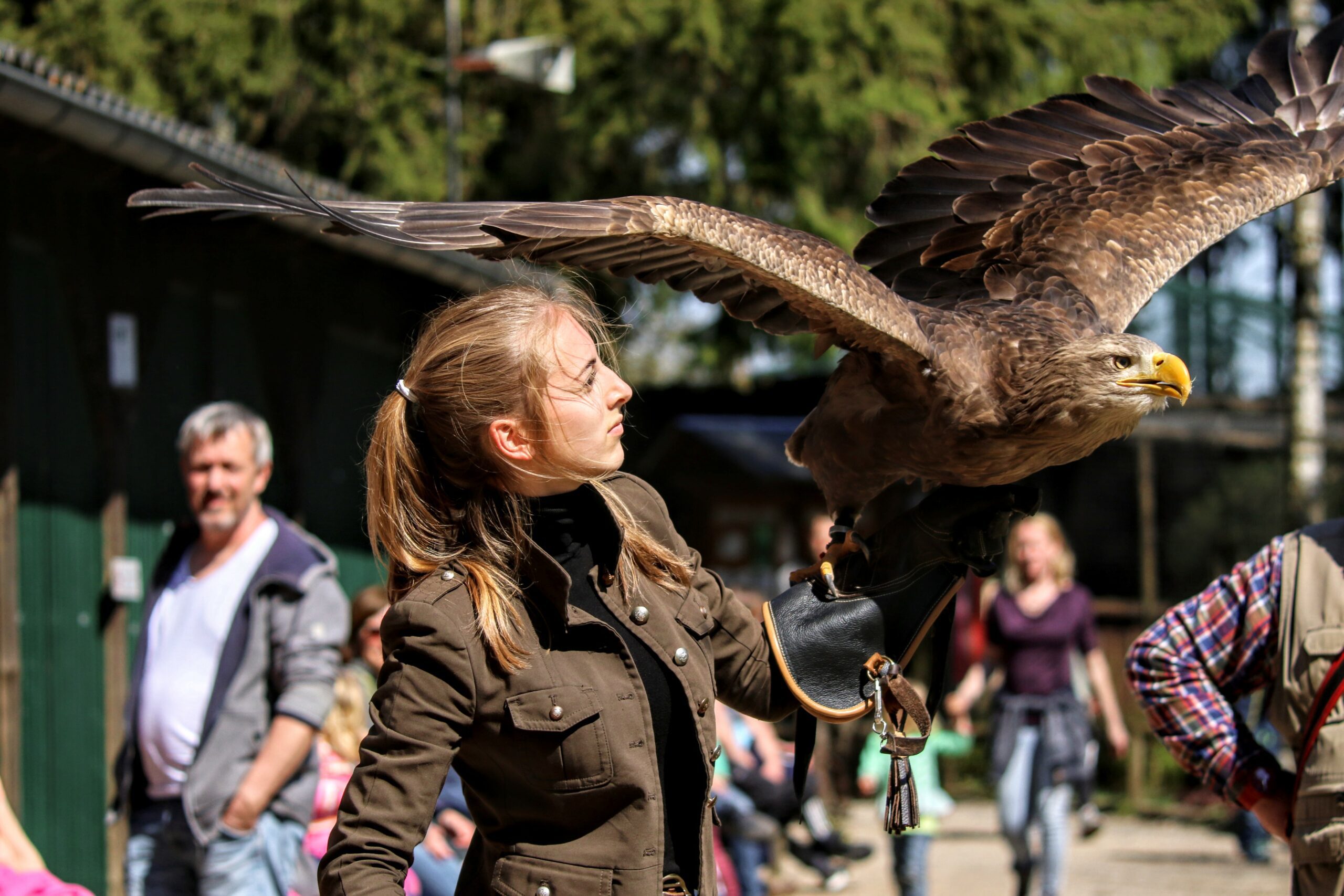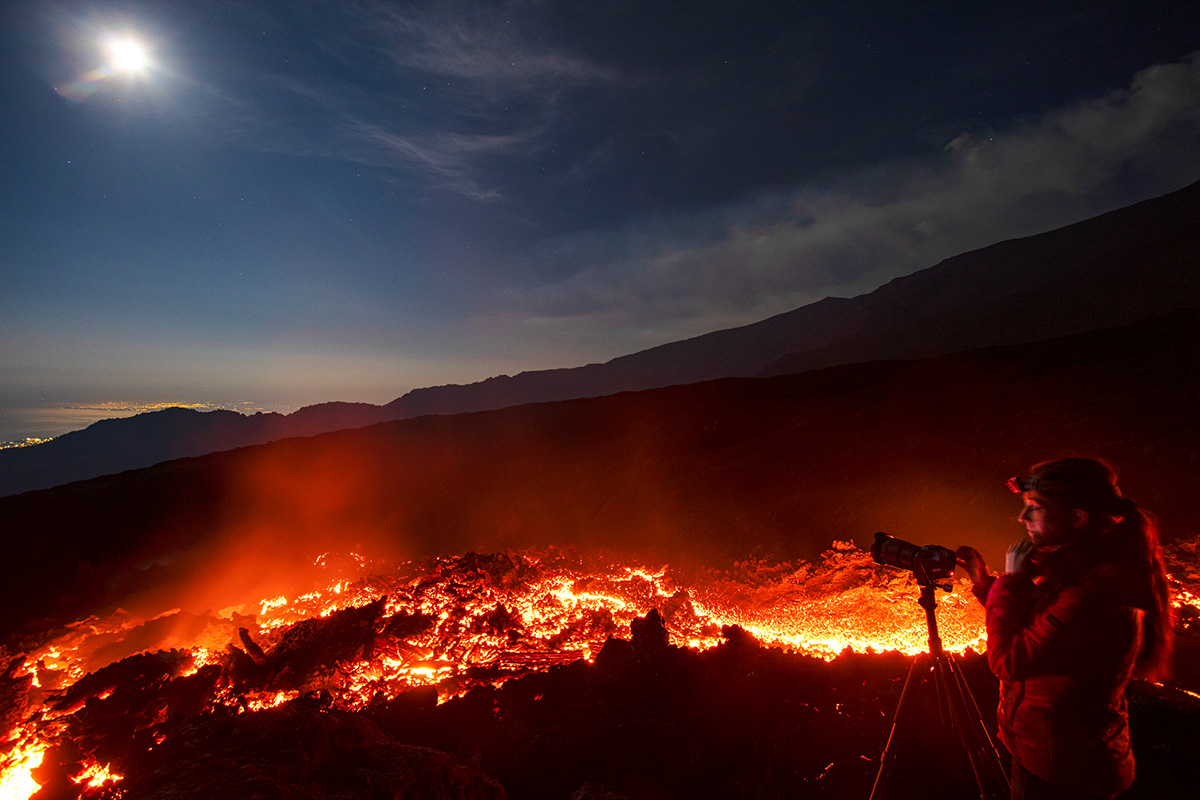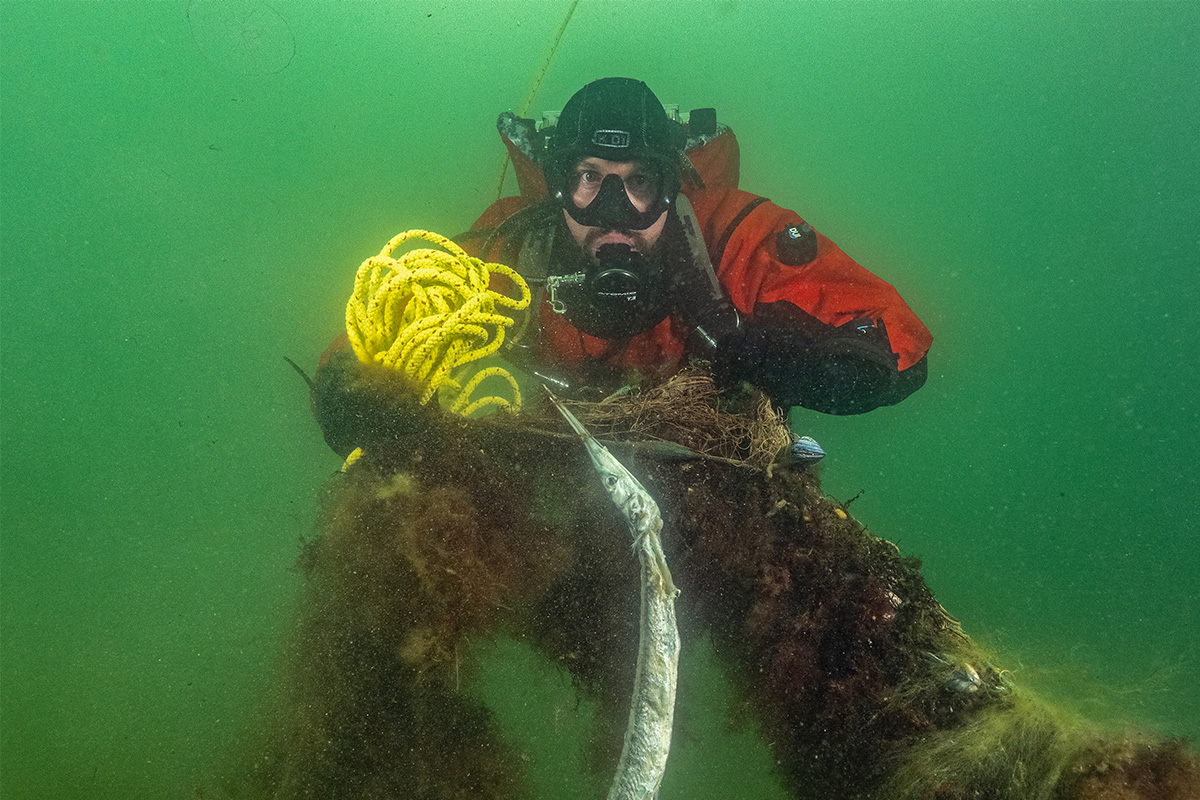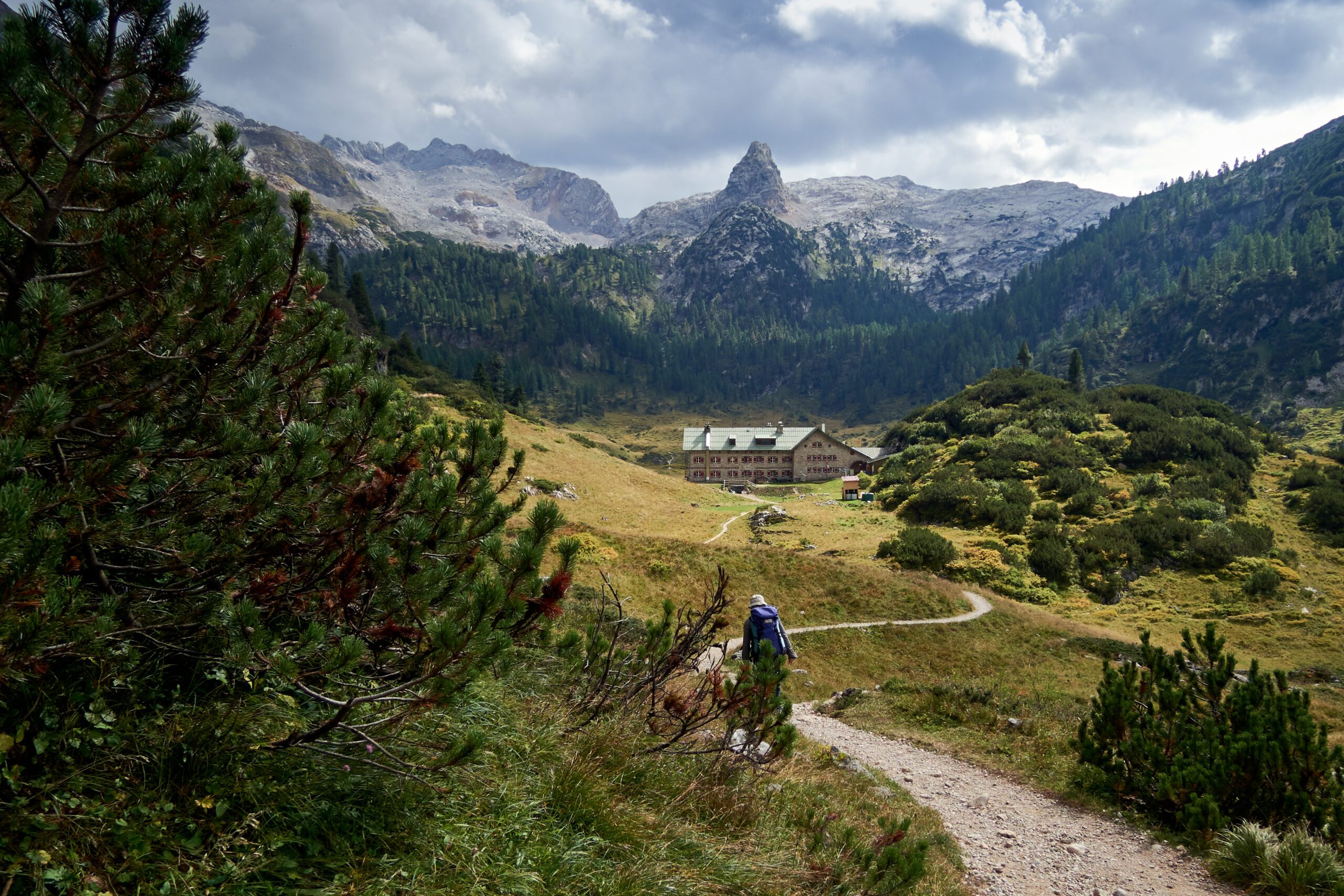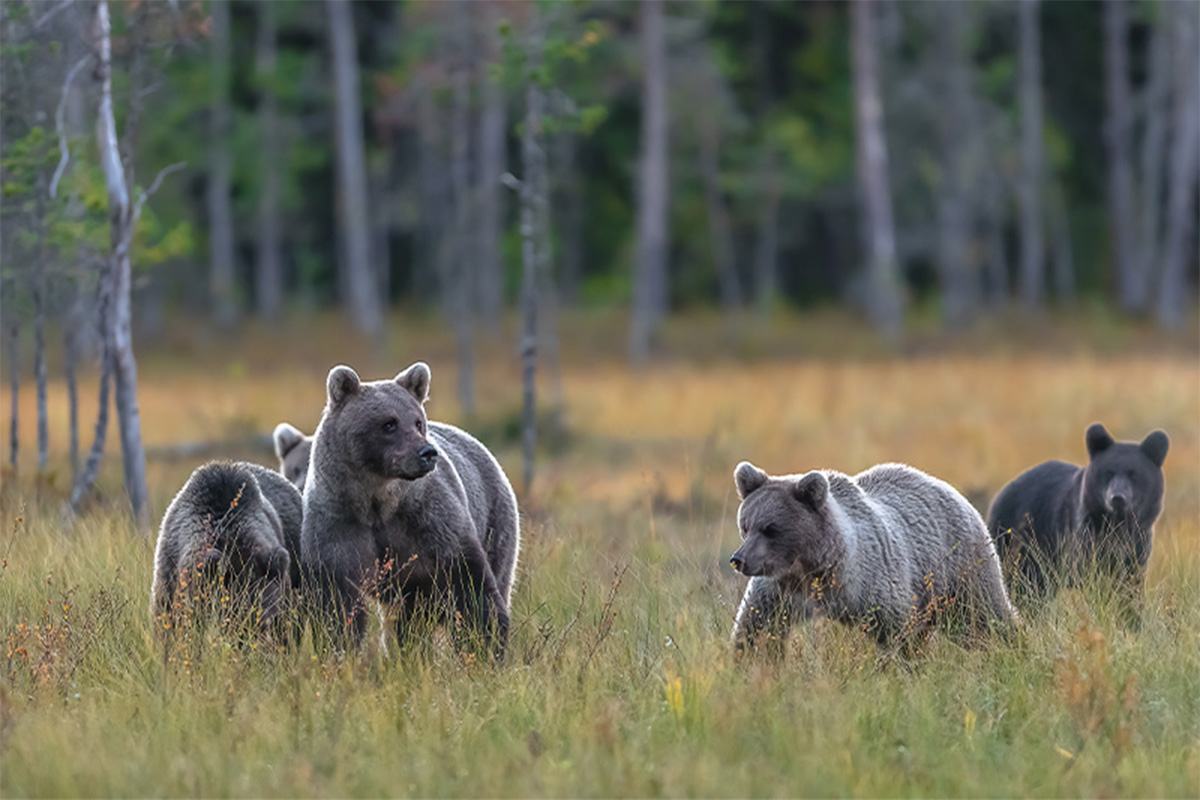Face to face with the jaguar. The Brazilian Pantanal is the only place in the world where you can get up close and personal with these incredible wildcats. As well as being one of the most biodiverse regions on Earth, the spectacular marshland is the largest wetland in the world. A trip along its branching river labyrinth is like binge-watching National Geographic documentaries in real time—wildlife reigns supreme!
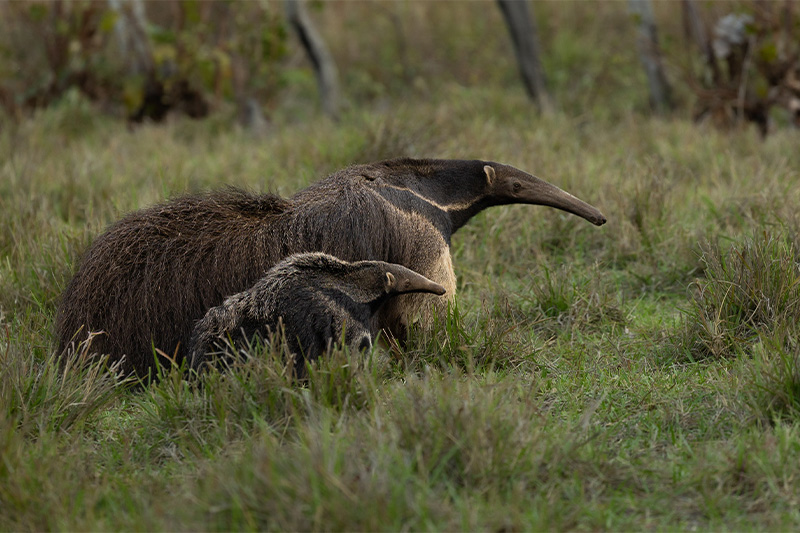
A rare sight: Anteater mothers usually carry their young on their backs to keep them safe and protect them from predators. The mother’s coat markings even align with the markings on their offspring, camouflaging it. When the baby is on its mother’s back, it “disappears,” making them look like one big anteater.
A kingdom of animals
We made our way along the dirt road in our pick-up truck—the bed laden with camera backpacks and waterproof dry bags for our belongings. For five bumpy hours, we crossed over 120 wooden bridges. The 147-kilometer-long Transpantaneira is the only road into the heart of Brazil’s North Pantanal, the largest inland wetland in the world. The Pantanal borders two Brazilian states, extending into Bolivia and Paraguay. Pantanal, the word simply means “swamp”. But this unique landscape is much more than just marshland. The labyrinth of branching canal systems, lakes, tropical forests and dry zones stretches over 230,000 square kilometers and is one of the most biodiverse regions on Earth.
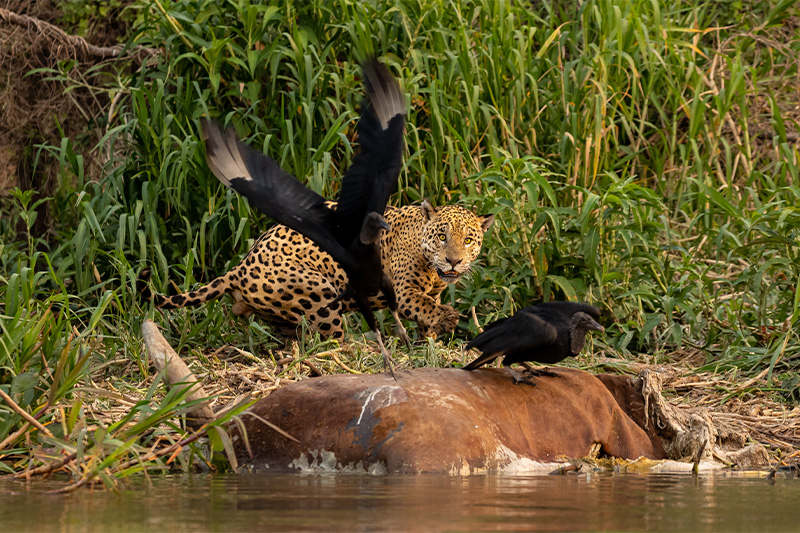
That’s what the vultures had been waiting for: The male jaguar turned his back on his prey—a dead cow that had floated downstream. Now was their chance to steal a bite of the stinking carcass—or not. Quick as a flash, the furious jaguar whipped around, scaring off the predators.
During the rainy season from November to March, the water level of the Paraguay River and its tributaries rises significantly, creating huge floodplains. During rainy reason, the animals living in the floodplains scatter, retreating into the forests or higher plains.
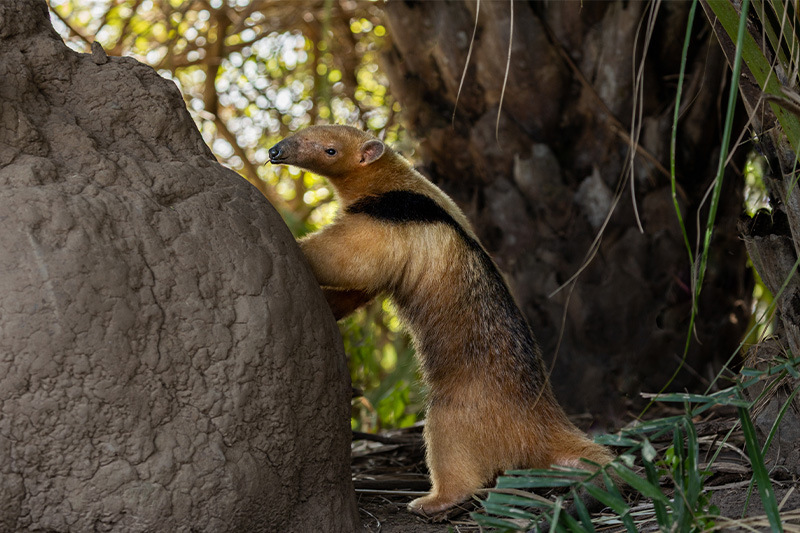
The tamandua, or lesser anteater, is predominantly nocturnal but likes to go with the flow, so it sometimes forages during the day. Unlike its relative the giant anteater, it’s a real climber—it spends over half its life in the trees, which it climbs using its prehensile tail and long claws.
The jaguar in the Pantanal
During dry season, they gather at the remaining lakes and ponds or come down to the river and its oxbow lakes to drink, hunt and mate. Dry season in the North Pantanal is prime time for wild jaguar spotting. But the jaguar isn’t the only must-see animal in the Pantanal. In the South Pantanal, the landscape is characterized by savannah plains and dry forests. It’s home to bright red sunsets, flocks of macaws and toucans. And a mammal that has been around for 57 million years: the giant anteater. Although it’s not going to win any beauty pageants, the anteater is hard to beat in terms of uniqueness.

It is easily recognizable thanks to its unmistakable beak. The photogenic toco toucan—also known as the giant toucan—is found exclusively in South America. The toucan uses its gigantic beak to open fruits and crack nuts, but small animals and young birds are also on the menu. Bon appétit!
On our search for South America’s largest wildcat, we swapped the pick-up for a boat. We then headed across the river on a wildlife safari, equipped with binoculars and plenty of bug spray. The riverbank and sandbanks were teeming with animals. Everywhere you look, there’s wildlife.
We encountered giant otters, capybaras, anacondas, caimans, tapirs and countless species of birds on our search for the jaguar—or onça-pintada, as the Brazilians call it. More than 120 species of mammals alone are native to the area. Some of them are found exclusively in the Pantanal. Due to its biodiversity and ecological significance, parts of the Pantanal have even been declared a World Heritage Site in Brazil.

A young female jaguar hunts along the riverbank. Of all the food the Pantanal has to offer, caimans are one of the jaguars’ favorites. They surprise them while they’re sunbathing on sandbanks or in shallow lakeshore areas—a bite-sized meal! Capybaras, which look like oversized guinea pigs, are much less dangerous prey for the jaguars.
A rare encounter
We heard a rustling sound coming from vegetation along the riverbank near our boat. Instinctively, I held my breath. Total silence. Maybe it was just a caiman that dove into the water when it heard us coming? All of a sudden, the water hyacinths that lined the shore like a dense green curtain parted. A beautiful female jaguar took center stage. Mere meters away from us, the cub made her way through the murky water in search of food. I heard her big paws splash as she calmly swam by our boat—what an incredible experience!
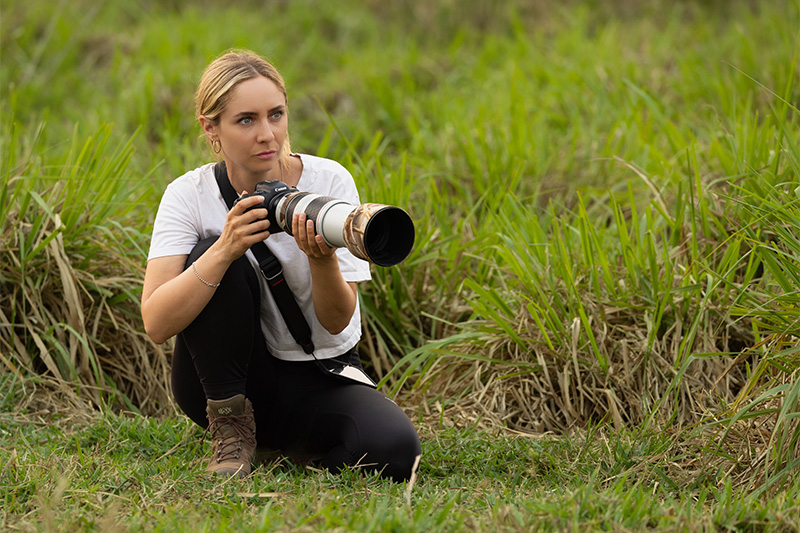
A common mission
I was in Brazil for a documentary film and photo project with Robert Marc Lehmann, an environmentalist and animal rights activist, photographer and adventurer. Our aim was to photograph and film the Pantanal’s two most iconic species: the jaguar and the anteater. Our film about the trip features lots of incredible wildlife shots and is now out on YouTube. Keep an eye out for “Robert Marc Lehmann – Mission Earth. In the first part of the documentary series, jaguar and crocodile meet.”
– Paula Kormos
